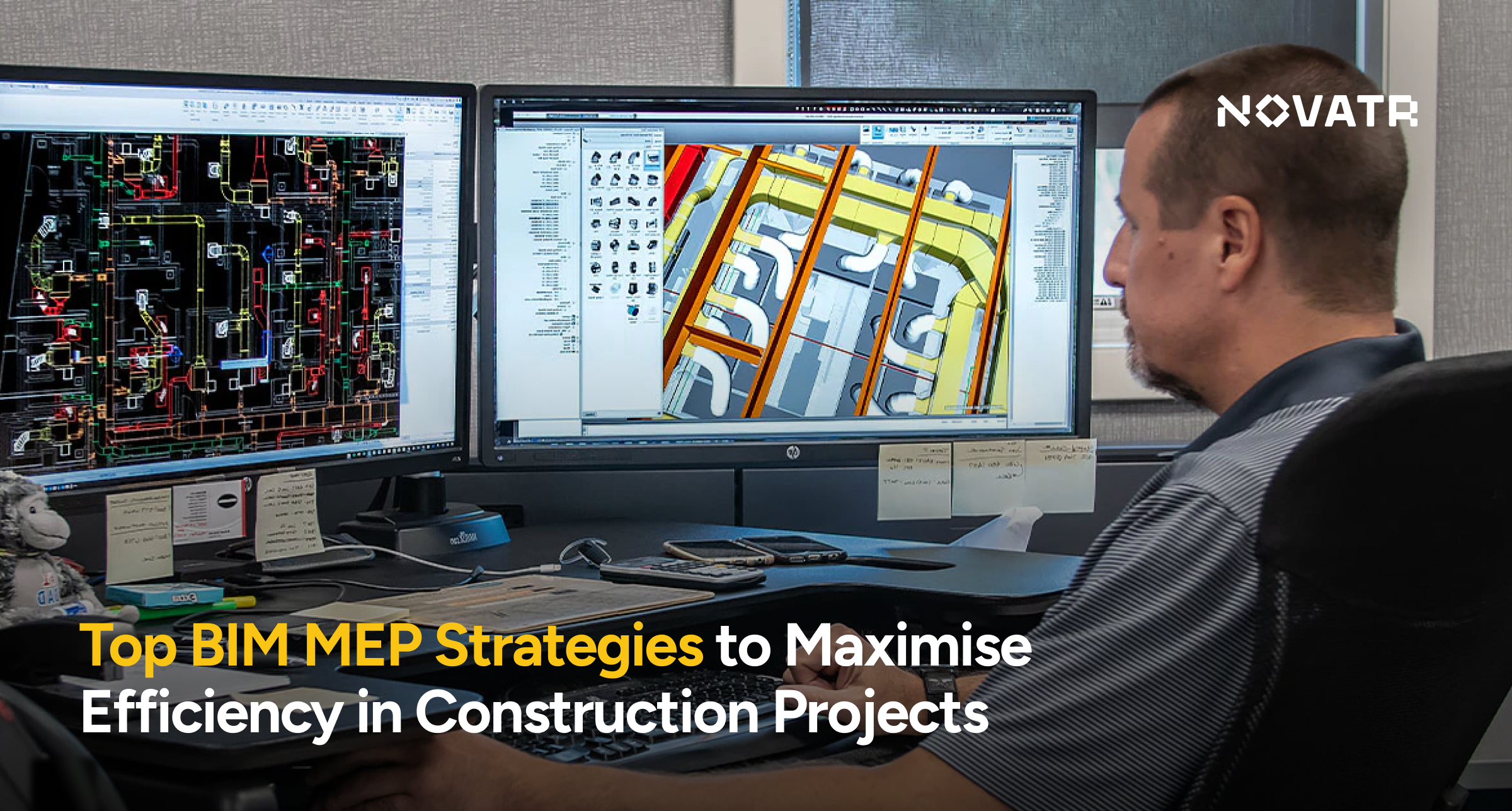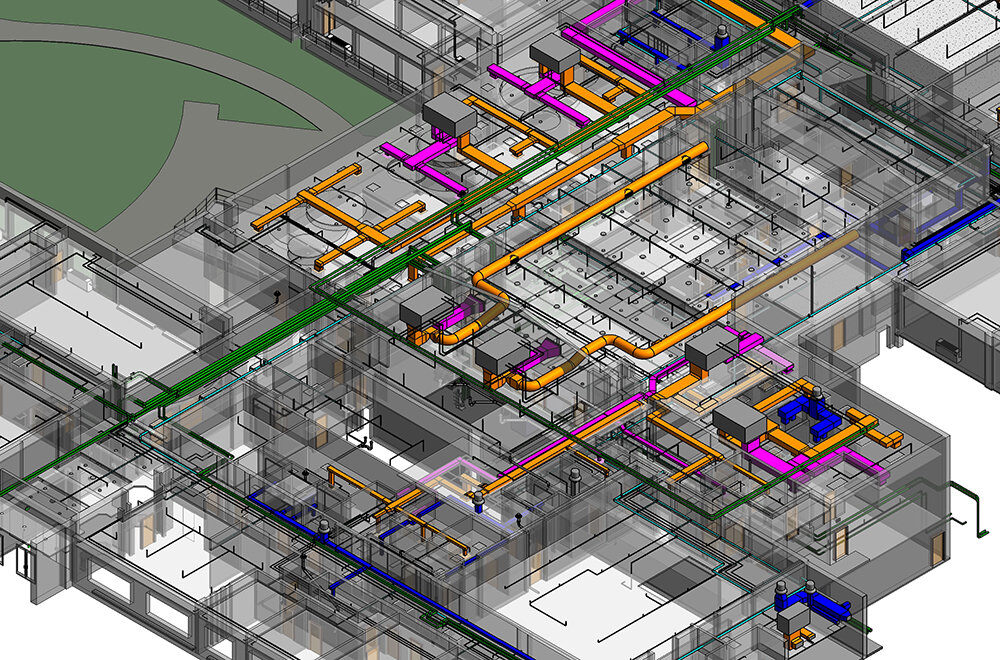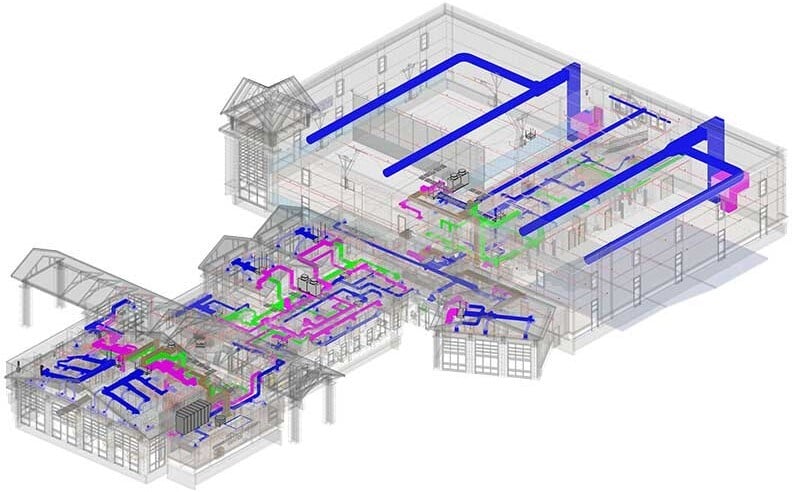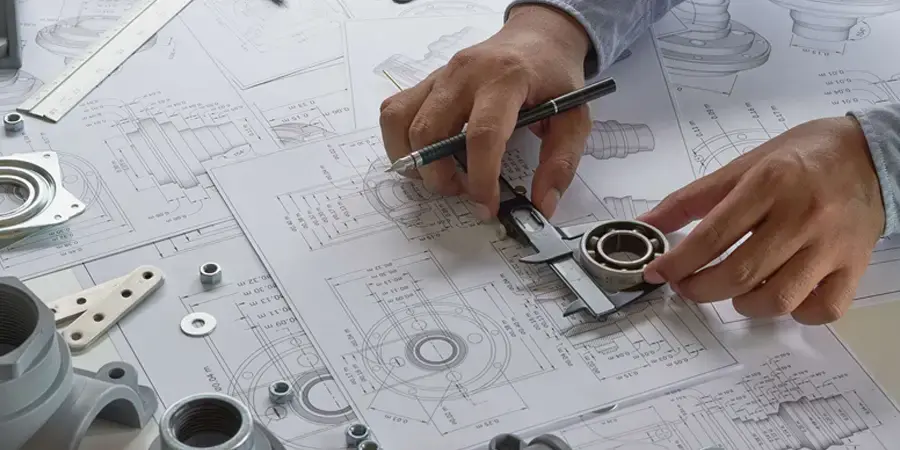
Efficiency is not a luxury in today's fast-paced construction sector; instead, it is required. One of the most powerful tools transforming modern building projects is BIM MEP, a digital process that enhances how MEP engineering is planned, designed, and executed. By integrating Building Information Modelling (BIM) with Mechanical, Electrical, and Plumbing (MEP) systems, construction professionals can streamline workflows, reduce costly errors, and elevate construction efficiency across the board.
With buildings becoming increasingly complex, traditional methods of MEP design and coordination fall short in keeping up with the precision and speed required. This is where BIM MEP steps in, reshaping how MEP services are delivered and maintained throughout a building’s lifecycle. But to get the best out of this technology, knowing the right practices is crucial. Let us delve deeper into the world of MEP BIM modeling, explore its significance, and uncover the best practices that can maximise outcomes on site.
MEP BIM Modeling and Its Importance in Construction
So, what exactly is MEP BIM modeling? Simply put, it involves the creation of intelligent 3D models that represent the mechanical, electrical, and plumbing systems within a building. These digital models do more than just visualise; they simulate real-world performance, helping teams predict how systems will behave and interact in the built environment.
The MEP meaning in construction goes beyond pipes and wires—it refers to the lifelines of a building. Without efficient MEP design, even the most impressive structures become inhabitable. BIM MEP software allows designers, engineers, and contractors to collaborate in a centralised digital space, ensuring every component—from air ducts to cable trays—fits perfectly with the architectural and structural elements of the project.
This digital integration significantly improves construction efficiency in MEP projects, cutting down on rework, clashes, and delays. With MEP BIM services, stakeholders can identify potential issues early, make informed decisions, and stay ahead of tight schedules and budgets.
Also Read: Top 50 MEP Interview Questions & Answers 2025

Top MEP BIM Best Practices to Enhance Construction Efficiency
To truly unlock the potential of BIM MEP, certain best practices must be followed. Here are some top strategies that have proven effective in boosting MEP construction success:
1. Start Early with Integrated Planning
Involve MEP services teams right from the conceptual design phase. Early collaboration between architects, structural engineers, and MEP engineering experts ensures that system requirements are accounted for, reducing the need for last-minute design changes.
2. Use High-Quality BIM Families
Avoid generic components. Instead, use manufacturer-specific BIM MEP software libraries and data-rich families. These detailed models provide accurate geometry and specifications, leading to better installation outcomes and operational efficiency.
3. Conduct Regular Clash Detection
Throughout the design and construction phases, make use of clash detection technologies. This allows MEP BIM modeling professionals to identify and resolve conflicts, such as a pipe intersecting with a beam, long before they reach the construction site.
4. Embrace Parametric Design
Take advantage of parametric modelling within BIM MEP to enable smart design changes. When one component is altered, related systems adjust automatically, ensuring consistency and reducing manual rework.
5. Sustain a Common Data Environment (CDE)
Centralised data access is critical. A CDE ensures that all project stakeholders are working from the latest models and documents, fostering better coordination and preventing miscommunication during MEP works in construction.
By incorporating these best practices, professionals can streamline workflows, reduce overheads, and significantly boost construction efficiency across various phases of the project.
Also Read: Key Benefits of Revit MEP for MEP Engineers
How BIM Enhances Project Lifecycle Management for MEP Systems

One of the lesser-talked-about advantages of BIM MEP is how it improves lifecycle management for MEP building systems. From design and fabrication to installation and facility management, BIM MEP software provides a central source of truth for every element of the MEP system.
For instance, once the building is operational, facility managers can use the BIM model to access exact details of every component—such as serial numbers, maintenance schedules, and energy consumption data. This visibility enhances decision-making and reduces downtime during maintenance or retrofitting activities.
Moreover, as MEP BIM services include asset tagging and data linking, future upgrades or system replacements become more manageable. In essence, BIM transforms the MEP construction process from a linear sequence into a circular, evolving model of information that supports long-term sustainability and performance.
How Novatr’s BIM MEP Course Prepares Professionals for Industry Standards
1. Industry-Relevant Curriculum
Covers core concepts of BIM MEP, including MEP design, coordination, and clash detection, aligned with global construction standards.
2. Hands-On Training
Learn through real-world projects that simulate actual MEP works in construction, helping learners build a strong project portfolio.
3. Advanced Software Skills
Gain practical experience with industry-leading BIM MEP software, empowering professionals to confidently handle complex MEP BIM modeling tasks.
4. Expert Mentorship
Get guided by experienced mentors from top MEP engineering firms who share practical insights and best practices.
5. Career-Ready Certification
Earn a globally recognised certificate that signals your readiness to work on high-impact MEP building and infrastructure projects.
6. Flexible Learning Format
Study at your own pace with access to recorded sessions, live support, and downloadable learning materials.
7. Job-Driven Outcomes
Includes career support with job placement assistance, resume reviews, and interview preparation tailored for roles in MEP construction and BIM MEP workflows.
8. Future-Proof Your Skills
Stay ahead in a competitive market by mastering tools and techniques that drive construction efficiency in modern projects.
Conclusion
In an era where precision, speed, and collaboration dictate success, BIM MEP stands out as a game-changer in the construction sector. From optimising MEP services to improving lifecycle management, this technology offers a smarter, more integrated way of building. By adopting proven best practices—such as early planning, clash detection, and parametric modelling—construction teams can dramatically enhance construction efficiency and reduce project risks. With platforms like Novatr offering world-class MEP course training, the future of MEP engineering is not just promising—it is already here.
Among the best options, the BIM Professional Program for MEP Engineers by Novatr stands out the most. For the latest updates, tools, and insights into the MEP and BIM industry, explore Novatr's Resource Page.
FAQs
Q1: Why is MEP BIM modeling essential in modern building projects?
Ans: MEP BIM modeling plays a vital role in modern construction by creating intelligent 3D models of MEP systems, which include HVAC, electrical layouts, and plumbing designs. This helps ensure systems are properly planned and integrated with structural and architectural elements, leading to smoother project execution, improved construction efficiency, and reduced delays during MEP construction phases.
Q2: How does BIM support the lifecycle management of MEP systems?
Ans: With BIM MEP, the entire lifecycle of an MEP system—from design and installation to maintenance—is managed through a single digital model. Facility managers can access data-rich insights on performance, maintenance needs, and future upgrades. This improves long-term efficiency and reduces operational costs for MEP building infrastructure.
Q3: How do MEP BIM services help reduce project risks?
Ans: MEP BIM services offer detailed design coordination, clash detection, and data-driven insights that help identify and resolve potential issues early. This reduces delays, budget overruns, and on-site conflicts. By improving collaboration and clarity, these services contribute greatly to the success and construction efficiency of MEP-intensive projects.
Was this content helpful to you



.jpeg)



